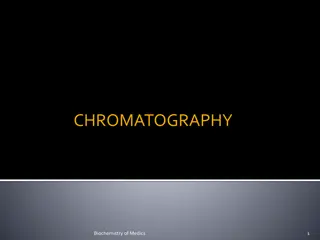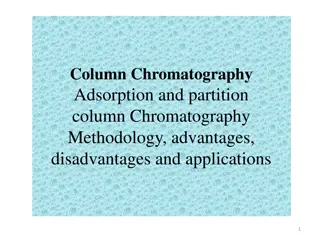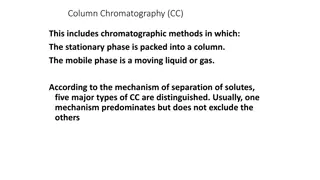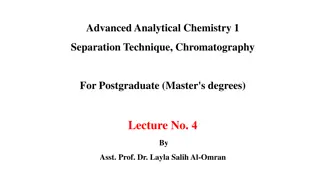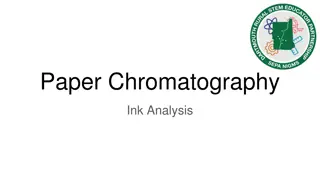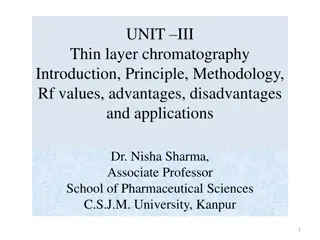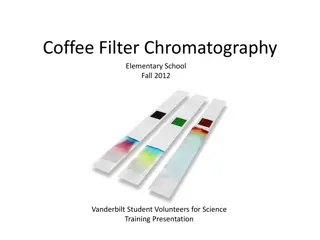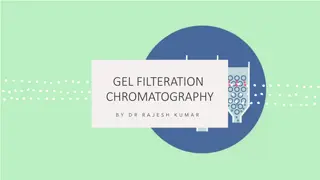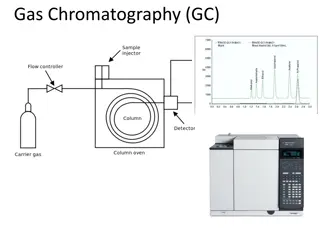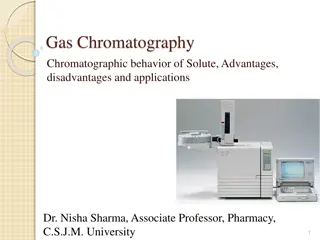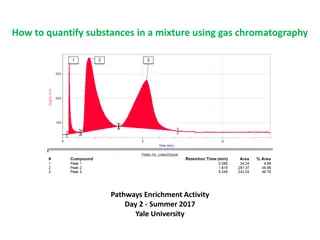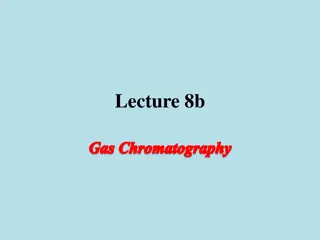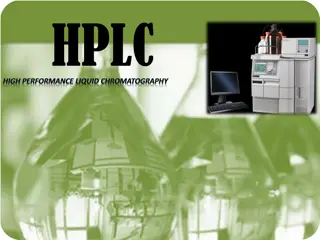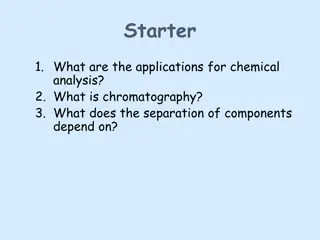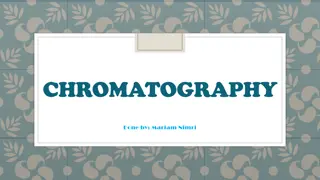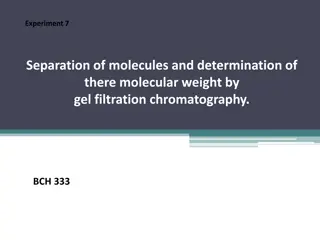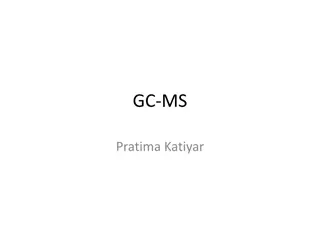Affinity Chromatography: A Breakthrough in Biochemical Research
Affinity chromatography, developed in the 1930s by A. Wilhelm Tiselius, is a vital technique for studying enzymes and proteins. It relies on the specific affinity between biochemical compounds and utilizes matrices like agarose for binding sites. Ligands such as amino and hydroxyl groups play crucial roles. Different matrices like cellulose and polyacrylamide serve specific purposes, enhancing separation ability. This technique allows precise interaction between ligands and target molecules, leading to advancements in various fields of biochemistry.
Download Presentation

Please find below an Image/Link to download the presentation.
The content on the website is provided AS IS for your information and personal use only. It may not be sold, licensed, or shared on other websites without obtaining consent from the author. Download presentation by click this link. If you encounter any issues during the download, it is possible that the publisher has removed the file from their server.
E N D
Presentation Transcript
1930s, first developed by A.Wilhelm Tiselius- a swedish biochemist, won the Nobel Prize in 1948. Used to study enzymes and other proteins. Based on the affinity of various biochemical compounds with specific properties.
Affinity Chromatography Bio-specific Chemo-specific
The matrix simply provides a structure to increase the surface area to which the molecule can bind. The matrix must be to it but still able to towards the target activated for the ligand to bind retain it s own activation molecule.
Amino, hydroxyl, carbonyl and thio groups located with the matrix serve as ligand binding sites. Matrix are made up of agarose and other polysaccharides The matrix also must be able to withstand the decontamination process of rinsing with sodium hydroxide or urea.
Cellulose : used for DNA affinity chromatography. Polyacrylamite : it beads. The beads sufficiently porous, ligand to bind over that. Agarose exist in gel & form are not so it do not allow in form of
It It It is having higher separation ability. is found to be non-biodegradable. has small particle size 40-80 micrometer. It can be derivetized. Commercially known by spheron beads.
LIGAND SPECIFIC LIGAND GROUP LIGAND
The Ligand binds only to the desired molecule within the solution The ligand attaches to the matrix which is made up of an inert substance The ligand should only interact with the desired molecule and form a temporary bond The ligand/molecule complex will remain in the column, eluting everything else off The ligand/molecule complex dissociates by changing the pH
Antigen Antibody Antibody Antigen Substrate Enzyme DNA Histon Hormone Binding Protein/Receptor
1) Inject a sample into an initially equilibrated affinity chromatography column. 2) Only the substances with affinity for the ligand are retained in the column. 3) Other substances with no affinity for the ligand are eluted from the column. 4) The substances retained in the column can be eluted from the column by changing pH or salt or organic solvent concentration of the eluent. Affinity chromatography is widely used as a means of separation and purification with specific properties.
Specificity is based on three aspect affinity of Matrix: for ligand attachment. Spacer arm: used to bind ligand to matrix Ligand: molecule that binds reversiblyto a target molecule(site of interaction) specific
Hi-Trap Heparin HP (High performance) Column size: 5 1 mm, 1 5 mm, 5 5 mm Average particle diameter : 34 m Maximum operating flow rate: 4 ml/min 20 ml/min.
At 2-8 C in an upright position caps in place. Thiomersal may be added for storage. DO NOT FREEZE Application areas : purification, isolation or removal of the following substances: Anti-thrombin III and other coagulation factors, lipoproteins, lipases, protein synthesis factors with both long term
:Step-1 Attach ligand to column matrix Binding of the selected ligand to the matrix requires that a covalent bond be formed between the two. This is facilitated by derivatization of the sugar residues' hydroxyl groups. It is important to realize that the substrate might not be able to reach the ligand active site if it is hidden deep within the ligand. Most ligands are attached first to spacer arms which are then bonded to the matrix. The ligand-matrix gel is then loaded into an elution column.
Once the column has been prepared, the mixture containing isolate is poured into the elution column. Gravity pulls the solution through the gel, because most of the proteins do not bind to the ligand-matrix complex. When ligand is recognized substrate passes through the gel, it binds to the ligand-matrix complex, halting its passage through the gel. Some of the impurities flow through the gel due to gravity, but most remain, unbound, in the gel column
In order to remove these unbound impurities, a wash of extreme pH, salt concentration, or temperature is run through the gel. It is important to use a strong wash so that all the impurities are removed. Once the impurities are washed-out, the only remaining part of the protein mixture should be the desired isolates.
Finally to collect isolate, which is still bound to the ligand-matrix in the gel, a stronger second wash is run through the column.
This second wash relies on the reversible binding properties of the ligand, which allows the bound protein to dissociate from its ligand in the presence of this stronger wash.
The protein is then free to run through the gel and be collected.
Purify and concentrate a substance from a mixture into a buffering solution. Reduce the amount of a substance in a mixture. Purify and concentrate an enzyme solution.
Used in Genetic Engineering - nucleic acid purification Production of Vaccines - antibody purification from blood serum And Basic Metabolic Research - protein or enzyme purification from cell free extracts
Affinity chromatography is widely used in the pharmaceutical industry to purify and extract molecules of interest from complex mixtures. These molecules tend to be enzymes, proteins or amino acids, but other biological species can be selectively retained. Once isolated, these biological species can be selectively amplified to produce larger quantities, although at large concentrations.
Hyper-lipidemia : here the sample is made to pass through coloumn containing antibody & plasma LDL so, it can easily separated out by iluting with glycine hydrochloride buffer (pH 3). Others : Pregnancy test Allergy test Immuno assay Kinetic studies Qualitative measurment of substrate. be
Extremely high specificity High degrees of purity can be obtained The process is very reproducible The binding sites of biological molecules can be simply investigated 1) 2) 3) 4)
1) 2) 3) 4) 5) 6) Expensive ligands Leakage of ligand Degradation of the solid support Limited lifetime Non-specific adsorption Relatively low productivity



